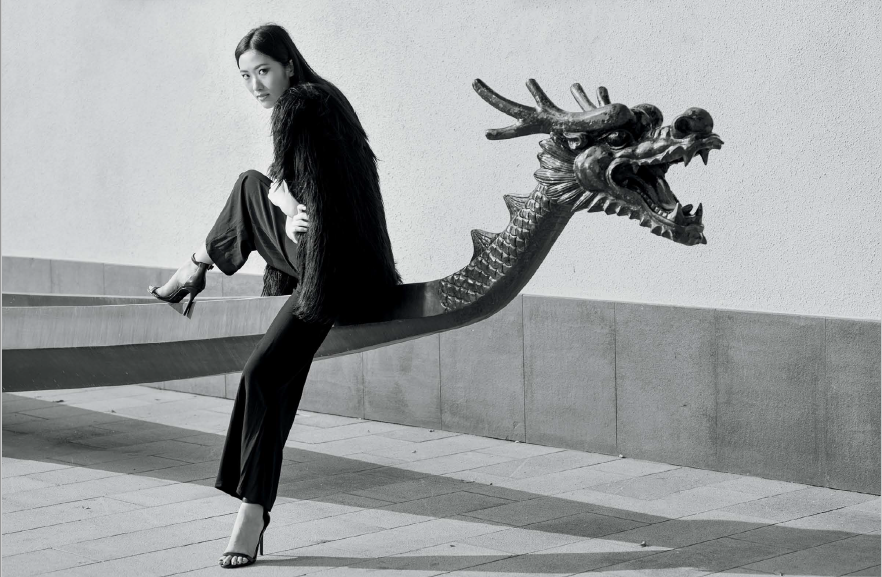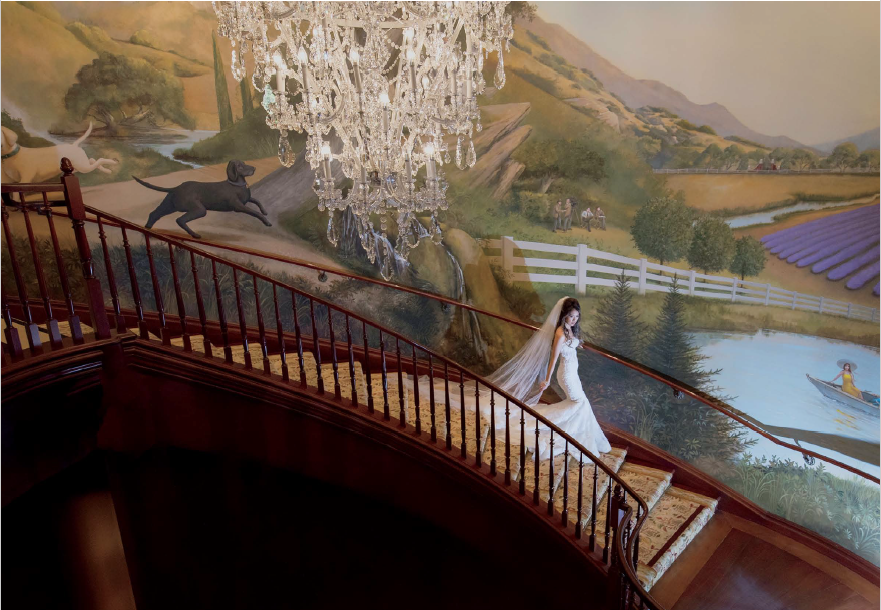The following is an excerpt from Roberto Valenzuela’s The Successful Professional Photographer.
Prospective clients looking for a portrait or wedding photographer for their momentous event or shoot bring a certain state of mind to their meetings with photographers. You must strive to understand what that state of mind is and decide how you can use that knowledge to your advantage. When individuals are in the market for a very important service or product that has long-term effects, that is a High Involvement Purchase. When you go to the grocery store to buy canned green beans, you probably go to the canned vegetable aisle and quickly glance at the labels. Within five or ten seconds, you’ve picked out a can and never give it another thought. That is a Low Involvement Purchase. As photographers, we are always dealing with High Involvement Purchases and their attributes.
A portrait shoot requires a great deal of planning and logistics for the clients before finally starting the shoot. Clients have invested time and money buying the appropriate clothing and coordinating with everyone on the photo shoot to make sure that they are wearing well-matched clothing. They have had their hair and make-up done and tried not to eat too much so that they look their best.

When deciding on a wedding photographer, clients are choosing a person who will be fully responsible for documenting the most important day of their lives and the beginning of a new family. This is a monumental decision that will impact the rest of their lives. With weddings, there is no do-over. The clients have one chance to choose the right photographer, and unless they remarry, there is no second chance. What does it mean for us to be always dealing with High Involvement Purchases? Here is a list of attributes that clients bring with them when they first meet with potential photographers.
THEY HAVE DONE EXTENSIVE RESEARCH
Clients contact you after they have done significant research on you and your competition. Besides looking at your website in great detail, they probably have gone through your social media posts on Instagram, Facebook, Yelp reviews, etc. Since you are well aware of this, be sure that your image and pertinent information about yourself on the web is consistent with your business and your values. People don’t know you, so they can only form an opinion about you based on what is on these social media platforms.


THEY ARE PART OF A LONG SALES CYCLE
Wedding and portrait photographers have a long-term sales cycle with their clients. The sales cycle for a wedding photographer could last two or more years. A sales cycle begins the moment you first have any kind of communication with a prospective client and continues until you have completely handed over all the deliverables to the client’s satisfaction.
What does this mean to you? It means that while there will be many opportunities to make additional sales, there are also more occasions when something could go wrong with the relationship. For this reason, it is imperative that you write down all the possible stages of your sales cycle that could become a problem and address them from the very beginning with your client.
For example, you could do an amazing job at the event or the portrait shoot. Everyone is very happy with you and your photography. So far, so good. But then you receive a call from the bride saying that she noticed some fly-away hairs in some photos, or she would like to see her teeth whitened, or she wants you to liquefy her in Photoshop to create a slimmer look. Those kinds of edits on hundreds of photos can take an unthinkable number of hours to complete. Even if you politely explain that you cannot accommodate this request due to the amount of time it would take, it could immediately derail your relationship, not to mention lead to negative reviews on Yelp.
To address these possible issues that could put a damper on the long sales cycle and the quality of the relationship with your client, be sure to address both verbally and in writing all the potential issues and explain very carefully how you address these issues in a way that will satisfy both parties. In most cases, if you have a reasonable solution, your clients should understand and agree. They must see that your proposed solution is an effort to satisfy their requests and keep them happy, but also to understand your point of view.
THEY ARE HIGHLY SKEPTICAL
We have all heard horror stories about wedding photographers. Portrait photographers receive their fair share of criticism as well, but because of the “once in a lifetime” nature of a wedding, wedding photographers seem to be scrutinized more often. Clients and guests notice what you wear, what you say, what you don’t say, how you treat your staff, how you speak to the wedding party, how organized you are at the wedding—they notice everything.
When a couple is planning their wedding, they consult with their many recently married friends as they look for guidance and tips. Naturally, in an effort to sound experienced and knowledgeable in the workings of wedding vendors, friends tend to exaggerate many of the stories they share with the couple regarding their own weddings. The bulk of the “Watch out for this!” types of stories come from either the event itself or from their experiences dealing with the photographer after the event when trying to finalize deliverables.

For clients, one of the scariest unknowns is the time it will actually take to receive their photos after the shoot. How will the photos be edited? Will they be able to contact you easily afterwards? What is your process for finalizing everything? People come to you with so much fear and skepticism because of the bombardment of scary stories they have heard.
To address this general skepticism, when prospective clients sit down for their first meeting with you, it’s best not to wait for them to raise these concerns. If you can anticipate these issues and casually answer questions to ease their fears during the meeting, it will go a long way toward establishing trust. Next, it is very important that any discussions about money-related issues or your approach to taking care of your clients after the shoot be extremely easy to understand. A ten-year-old child should be able to follow along and completely understand your pricing structure and how you proceed after the photo shoot. If a potential client does ask you questions regarding a difficult or challenging topic, have clear, prepared answers ready. You must be prepared for these questions or it will further increase their doubts and the meeting will eventually end poorly. The more prepared you are with clear and organized answers, the better. You can imagine how it can look if a client asks you a question on a matter they are skeptical about, and they see you trying to think up the answer as you go. Not good. So be prepared ahead of time to eliminate their skepticism, pronto.

THEY ARE OVERWHELMED WITH INFORMATION
The last concern you should be aware of regarding a prospective client’s state of mind is how overwhelmed they can get with all the choices, options, combinations, permutations, upgrades, and prices for everything. If you can take this knowledge and use it to your advantage by providing a breath of fresh air with clarity and simplicity, you will be unrivaled! Complicated price lists and upgrades just add to their skepticism and confusion. Adhere to the principles below to enable you and your business to offer the breath of fresh air they need.
Clean
By “clean,” I’m not just talking about your presentation and pricing structure. I also mean your home, your studio, and especially the bathroom. Clean restrooms should be an obvious necessity, but most people don’t think much about them. Photographers are so preoccupied with preparing for the presentation meeting that the restroom could very easily slip their minds. Put yourself in the shoes of a prospective client encountering dirty facilities. Could there possibly be a worse turn-off?

Easy
As photographers, we too can be overwhelmed by the numerous product choices we can sell to our clients. Just attend a photography convention and be awed by the plethora of materials you didn’t realize you could print a photograph on! The moral of the story is this: Do not take the stressful task of choosing from a hundred album cover choices, two hundred varieties of frames, or twelve paper choices for photo printing and pass it on to your clients. As obvious as this may sound, keep your entire approach, presentation, product line, and upgrades easy to understand.
I only offer three types of wedding album covers. The album company I work with, Graphistudio, offers endless options, but for my brand, only three options make sense and are in line with my style and target market. If a client wishes to see more options, they can. But then it’s the client who is making the process more complicated, not me.
Transparent
Transparency is a necessary tool for setting expectations for a shoot. If you are planning a family photo shoot near sunset so you can take advantage of that golden-hour light, and some family members are late, you will most likely miss that very small window of wonderful light. At weddings, the make-up artist doesn’t usually release the bride at the agreed-upon time. Be transparent about how these kinds of delays can affect the shoot, the light, and the photo sets your clients want to have.
Additionally, if you show photos to clients that were taken at a workshop, be transparent about that! Ideally, your portfolio should only show real-world jobs with all the time constraints and challenges that come with them. This way, people know what to expect for their shoot or event. It is to your benefit to be transparent about this, or you risk disappointing your clients with the photos that you deliver. The level of work you show in your portfolio should be representative of what you can consistently achieve on a job. To address this, I make a point to show portraits and weddings of a variety of clients, not just the “best looking ones.” I also show a variety of venues and locations. People want to see the reality of a job and the resulting photos, not the ultimate ideal job conditions when everything is perfect. Of course, you should show your best work, but also show a variety of what you can achieve with the conditions and challenges that you normally encounter.
By being transparent with the level of work you can provide, not only will you greatly decrease the chance of disappointing your clients after the fact, but during the meeting, your clients will easily be able to see themselves in your photographs. That’s always a goal of mine. If clients can relate, they will be excited! However, if all your couples or clients look as if you brought them straight from a New York Fashion Week runway, they will subconsciously feel inferior and think you are not very excited to work with them.
Conduct yourself honestly. When people are truly honest and transparent, they become trustworthy. Without trust, there is no job. It is of great importance that you answer your clients’ questions with honesty and that you show work that is truly representative of who you are now as a photographer and the work you can create on a real-world job.

This article is an excerpt from Roberto Valenzuela’s The Successful Professional Photographer.
